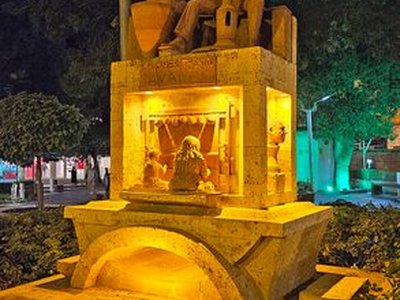Çanakçı Heykeli


In 1974, the small, historic
town of Avanos in the Kapadokya (Cappadocia) region of central
Turkey
decided to build a statue promoting the region’s long history. The municipality along with a local tourism association commissioned master potter
Hacı Ömer Taşkın
to design and construct the ceramic statue.
Taşkın worked for several months to create the monument. He first started with sketches, then experimented with different clay from different regions, and different methods of drying and cooking the clay. In his home, Taşkın devoted an entire room to creating the statue. He even constructed a special kiln to create the sculpture. The monument, which was more than 15 feet tall, was unveiled in 1974. Unfortunately, Taşkın died just beforehand.
The monument consists of several parts. The top part features a man creating traditional Cappadocian pottery. The front of the monument shows a mother and daughter weaving a carpet. The rear shows a woman traveling into a field on a donkey with a child looking out from a saddlebag. The left side shows a smiling tourist holding a bunch of grapes. The right side of the monument originally featured two fish, but after Taşkın’s death, people decided to replace that with a self-portrait bust made as a kind of memorial before he passed away.
The statue has stood in Avanos Cumhuriyet Meydanında (Avanos Republic Square) since 1974, although the section with the weavers was missing for an extended period. Even in such a prominent position, the statue seems to get lost among the various tourist-oriented restaurants, shops, and other businesses within the busy central square, but it is worth taking the time to view and quietly contemplate this monumental piece of craftsmanship.